Rose "Hendel": description, planting and care
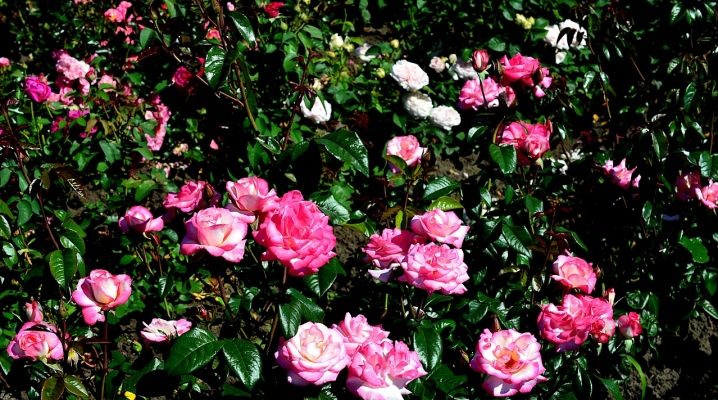
The Handel rose variety has gained popularity due to its unusual appearance - the color of the edges of the wavy petals differs from their main shade. The plant is not too capricious, it is not afraid of low temperatures, it is often used to create various landscape compositions.
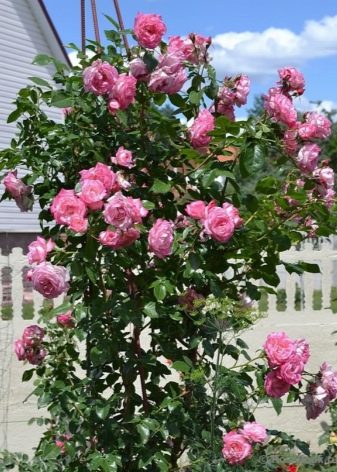
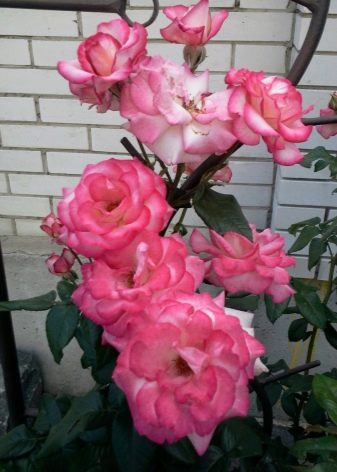
Description
The climbing rose "Handel" is distinguished by its unusual two-tone color: white or cream petals with pink, and sometimes with crimson frills. The variety grows rather slowly, but occasionally pleases the owners with the appearance of new shoots. Double flowers reach a size of 8 to 10 centimeters. Despite the attractive appearance, the smell of roses is practically absent, which some gardeners may consider a significant disadvantage.
The flowering of the variety occurs twice a year, but unevenly. The second time, the culture blooms much less abundantly than the first. The bushes are covered with flowers from July to October, but it happens in waves: first, the plants delight with roses for a month and a half, then a break follows, and then the second wave of flowering.
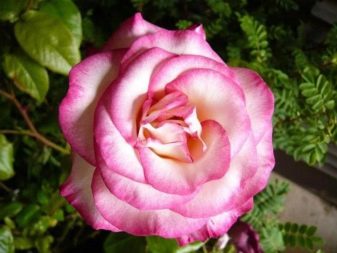
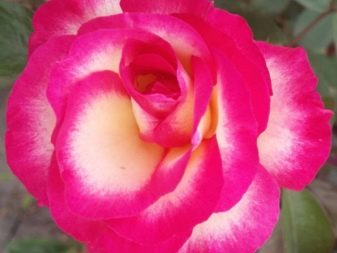
The buds bloom one by one. Therefore, at a certain point in time, you can find on one plant both fully blossoming buds and completely closed ones. The bush grows tall. Its length varies from 3.5 to 4 meters, and its width reaches 2 meters. The shoots of the plant are tough, dense and branched. The leaves are colored deep green.
On each branch, from 3 to 9 beautifully shaped buds appear. When the flower opens, the bright edging looks rather thin, but it expands over time. By the way, the color may differ depending on the climate in which the culture develops. If the region is characterized by low temperatures, then the petals will fade, and if high, the shade will be more saturated, up to the disappearance of the edging. Densely double buds grow either one at a time or in inflorescences, consisting of 3-7 pieces.
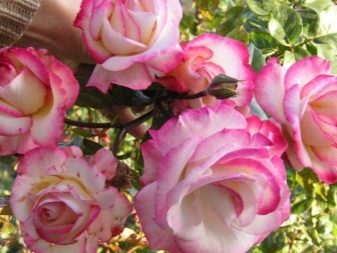
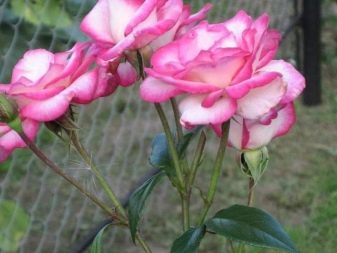
The variety is resistant to most common diseases, except powdery mildew. Also "Hendel" is highly resistant to low temperatures. In mild climates, roses can overwinter even without additional cover. In other regions, either support vertical cover or standard horizontal cover is used.
As for the disadvantages of this variety, there are only two main ones. Firstly, it is the inability to successfully resist powdery mildew and the frequent defeat of black spot. Secondly, "Hendel" does not tolerate heavy rainfall. With constant or long-term presence in rainy areas, the flowers begin to turn brown and then rot.
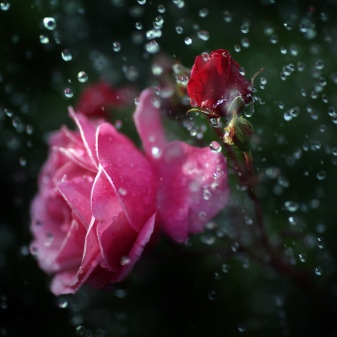
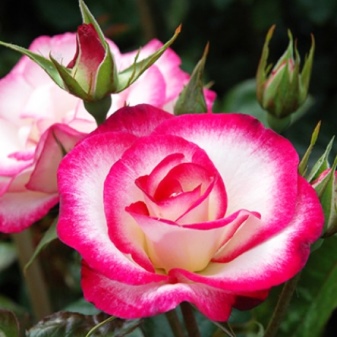
Landing
For the planting of the Hendel variety to be successful, it is important not only to choose the right place, but also to guess over time. Experts recommend planting a bush from May 8 to 10. However, if you purchase seedlings in a greenhouse, you should wait until the soil temperature reaches 10 degrees Celsius. This can be determined by the state of the leaves on the bushes - if they all have blossomed, then roses can be planted.
The best area is the one that gets sunshine in the morning and goes into the shade at lunchtime. Excessive sun exposure will cause burns to appear on the leaves. This, in turn, will significantly worsen the condition of the plant and lead to the spread of pests and various diseases.
It should be said that this rose variety does not tolerate drafts well, as well as northern winds - it will not die, but growth and development will surely slow down. The selected place must be provided with high-quality drainage, as well as fertilized with mineral and organic compounds.
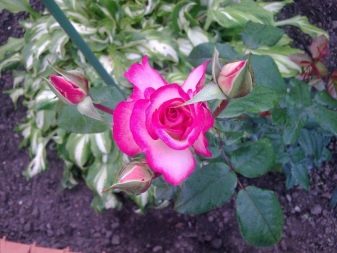
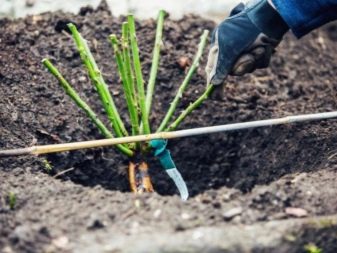
Most of all "Handel" respects loamy soils, loose and fertile, with neutral or minimal acidity. If there is only sandy soil, then it will have to be enriched with clay. Insufficiently loose soil is supplemented with lime, sand or compost. Too high acidity is neutralized by ash or dolomite flour. Do not forget about fertilizers - roses respond well to the introduction of humus and humus, phosphorus compounds, as well as soil bacteria.
The site must be protected from northern winds. If the flower is planned to be grown next to a house or other structure, then there should be a gap of one meter between them. Otherwise, the water dripping from the roof will flood the roots of the plant. The hole in which it is planned to plant the bush should have a depth of approximately 65 centimeters. When several plants are placed side by side, it is important to leave about 100 centimeters between them so that the root system of each specimen can develop normally.
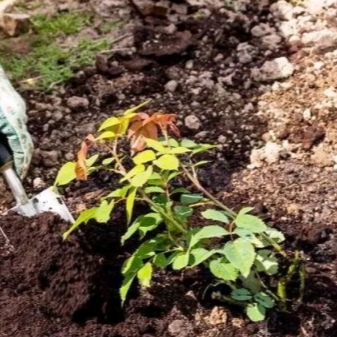

Before planting, the aboveground part of the seedling is cut to 3 or 4 shoots. The root system should also be thinned out - freed from damaged and weak processes, and also treated with a manganese solution. Then the rose is placed in the hole so that the roots feel free. All the voids that appear are filled with soil. It is necessary to ensure that the root collar deepens by no more than 10 centimeters. Having compacted the earth, it is worth completing the planting with irrigation with medium temperature water. The first days the seedling will feel good under the film, provided it is regularly ventilated.
Ideally, the rose should not have "neighbors". It is immediately recommended to install a solid support, since the size of the bush is expected to be impressive, and the shoots are quite long. If you want to land "Hendel" at the fence, the structure itself should consist of gratings. In this case, it will transmit light without problems. There should be enough space at the foot of the bush for winter placement of the whips.
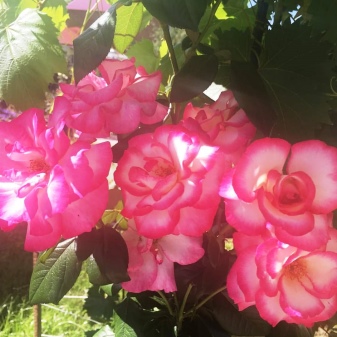
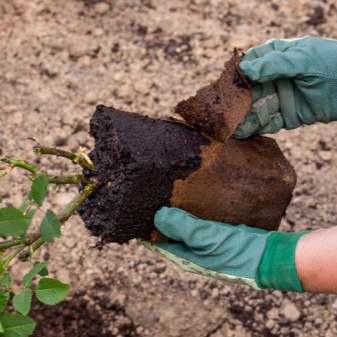
Care
Rose "Hendel" must be watered regularly. As a rule, irrigation is done a couple of times a week. The amount of liquid is adjusted depending on the weather conditions. It is important to regularly inspect and make sure that the soil remains in optimal condition: it does not dry out and does not flood. After planting the plant, it is important to fertilize about six times before it starts flowering. It is best to use manure or mineral complexes.
While the rose is blooming, top dressing is optional. In the fall, before wintering, you can add a potassium complex. To prevent the development of diseases, "Hendel" is recommended to be treated with a 3% solution of copper sulfate. Insects will be scared off by purchased insecticides. The prophylaxis should be repeated at the end of autumn. If the rose still gets sick, then the treatment will have to be done with the help of fungicides. It can be Bayleton, Ridomil Gold, Mikosan or Albit.
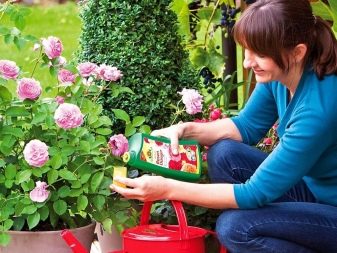

Pruning of climbing plants is carried out in the fall. All shoots are shortened by about one third. All dried, diseased or damaged parts must be removed without fail. In the spring, when the rose emerges from hiding, it should also be examined and freed from elements that have not survived the winter. Throughout the season, dry or spoiled shoots are regularly checked and destroyed.
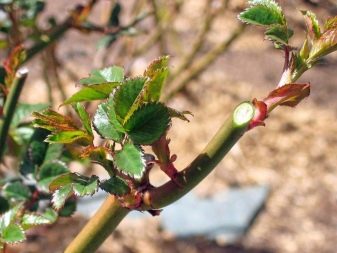
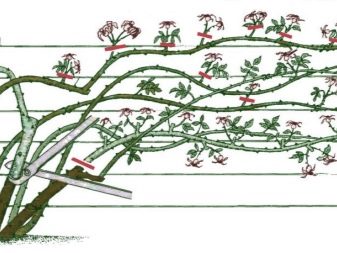
Reproduction
Reproduction "Handel" is carried out using cuttings or layering. If a branch is chosen, it will be dealt with in the fall.Near the chosen shoot, which is distinguished by strength and power, a hole is pulled out, which is filled with humus or sand. Having bent the process, it should be placed in the fossa so that the upper kidney remains above the surface. The middle part of the shoot is covered with earth. It will have to be watered and weeded regularly. In the spring, the cuttings can already be separated and transferred to a new place, since the root system will be formed by this time.
Reproduction by cuttings is carried out in July. To do this, you will need to cut out the middle part of the shoot with 4 or 5 buds. At the same time, at the top, the movement of the knife goes horizontally, directly above the kidney, and at the bottom - at an angle of 45 degrees, directly under the kidney. In addition, the lower leaves should be removed, and the upper ones should be divided in half, removing half. Each stalk is planted in a container filled with soil and sand, irrigated, covered with a glass jar and removed into a well-lit and heated space. The appearance of the first leaves signals that the cutting can be transplanted to the site.
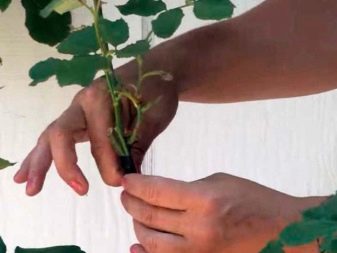
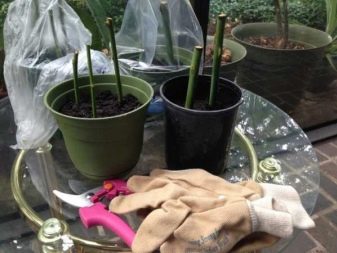
Preparation for wintering
In order for Hendel to survive the cold months, it is important to protect it. The shelter should be made in such a way that an air cushion remains between the material used and the plant itself, but no precipitation can get inside.
First of all, the bush is untied from the supports and wrapped in twine. Then the roses must be bent to the ground so that they are lying on the ground. From above, everything is covered with leaves, spruce paws, or a standard shelter material, for example, plastic wrap. Do not forget about mulching the zone at the roots with peat, in front of which you should definitely loosen it.
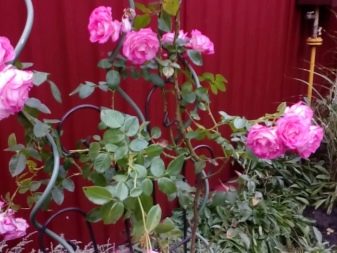
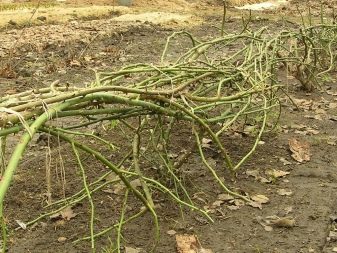
Examples in landscape design
The Handel climbing rose will look amazing if you plant it next to a regular wooden fence and allow it to grow like a "waterfall" without maintaining any particular shape. Despite some "relaxation", such a composition will even fit into a strict landscape design and will become the brightest area on the site. If you place the bush by the window and fix it on the supports so that it "crawls" up the walls, you will be able to diversify the usual look.
In principle, this variety looks very impressive on its own. If you orient it up and not let it grow too laterally, then you will be able to create a flower column, which will turn out to be a full-fledged element for decorating the site.
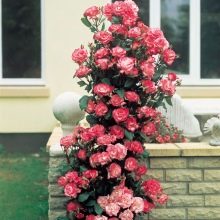
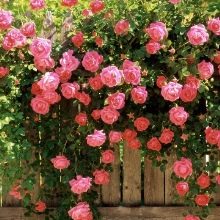
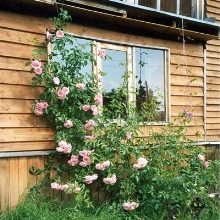
For information on how to care for a climbing rose, see the next video.

































































































The comment was sent successfully.